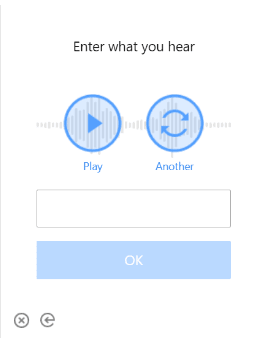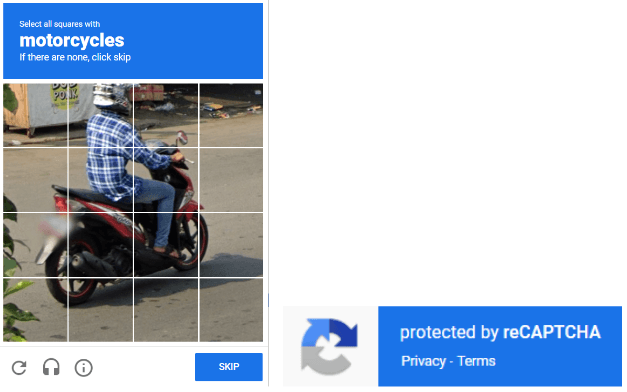How to Bypass CAPTCHA While Web Scraping: Effective Solutions and Approaches
A CAPTCHA is a challenge generated by computers to distinguish between human users and automated robots. Simple for humans to resolve but extremely difficult for bots attempting to bypass secured web content, CAPTCHA while web scraping can be extremely frustrating for developers who are interested in collecting data efficiently.
The term "CAPTCHA" stands for "Completely Automated Public Turing test to tell Computers and Humans Apart." The concept is inspired by the Turing Test, a challenge put forth by British mathematician Alan Turing in 1950 to differentiate between humans and computers.
CAPTCHA applies Turing's concepts in practicality to prevent automated programs from visiting websites posing as human visitors.
CAPTCHA serves as a protective measure against various cyber threats, including:
- Automated bots attempting to scrape web data.
- Spamming and unauthorized data collection.
- Brute-force password attacks.
- Distributed Denial-of-Service (DDoS) attacks.
- Unwanted automation of online services.
Web scraping efforts often encounter CAPTCHA challenges, making it essential to develop effective bypass strategies.
CAPTCHA methods vary in complexity and presentation. Here are the most common types:
Text CAPTCHA

Users must enter text from a distorted image. Additional visual noise makes automated recognition more difficult.
Graphical CAPTCHA

Instead of text, users identify images containing specific objects, such as traffic lights or animals.
Audio CAPTCHA

For accessibility, some CAPTCHA challenges provide an audio challenge, requiring users to listen to a distorted recording and input the spoken words or numbers.
Mathematical CAPTCHA

Users solve a simple arithmetic problem (e.g., 3 + 5) to verify their identity.
ReCAPTCHA

Developed by Google, this advanced CAPTCHA system uses AI-driven tests, such as clicking on particular images or simply confirming "I'm not a robot."
As bots become more sophisticated, CAPTCHA systems continue to evolve to maintain their effectiveness.
Website scraping is automatic data extraction from web pages using scripts or specialized software. Scraping is carried out for various purposes, such as:
- Market research and data analysis.
- Competitor monitoring.
- Content collection and indexing.
- Web archiving and tracking changes.
While scraping is widely used for legitimate purposes, the majority of websites use CAPTCHA tests to deter unauthorized data harvesting.
Bypassing CAPTCHA while web scraping requires advanced strategies to avoid detection and solve CAPTCHA challenges efficiently.
CapMonster Сloud is a cloud-based solution that efficiently solves CAPTCHA challenges using AI-driven algorithms. It supports multiple CAPTCHA types and provides seamless automation.
- API-based solutions – Developers can send CAPTCHA images to CapMonster.cloud and receive a solved response for seamless automation.
- Pre-built libraries – Available for popular languages such as Python, JavaScript, and PHP, these libraries simplify CAPTCHA resolution.
- Distributed solutions – Utilizing multiple servers and machine learning, these solutions enhance speed and accuracy.
- AI training models – The service continuously improves recognition capabilities by analyzing large datasets.
- Resource allocation – Users can reserve resources for faster CAPTCHA solving, making large-scale scraping more efficient.
Frequent scraping may result in access restrictions or CAPTCHA triggers. Here are strategies to mitigate blocking:
1. Use a VPN (Virtual Private Network)
A VPN hides your IP address and helps bypass geographical and ISP-based$ restrictions.
2. Use Proxy Servers
Rotating proxy servers prevent detection by dynamically changing your IP address.
3. Implement DNS Redirection
Services like Google Public DNS and Cloudflare DNS can reroute requests, reducing the likelihood of blocks.
4. Use the Tor Network
The Tor browser anonymizes web traffic, but it may not always be reliable due to tracking and traffic analysis techniques.
If a site relies heavily on CAPTCHA for verification, using automation tools such as CapMonster.cloud can significantly streamline data collection efforts while maintaining compliance with website policies.
Previously, CAPTCHA-solving relied solely on human input. However, artificial intelligence has revolutionized this field. AI-driven CAPTCHA solvers work through:
1. Image Processing
The system scans and preprocesses the CAPTCHA image using noise filtering, segmentation$, and pattern recognition techniques.
2. Text and Element Recognition
Machine learning models analyze and extract text or image patterns, improving accuracy over time.
3. Automated Response Generation
Once recognition is complete, AI outputs the correct CAPTCHA response and submits it automatically.
CAPTCHA developers continuously enhance security mechanisms, but AI-driven solutions, like those integrated into CapMonster.cloud, consistently evolve to overcome new challenges.
- AI-powered recognition with continuous model updates.
- Supports multiple CAPTCHA types.
- Seamless integration with API and browser extensions (Google Chrome, Mozilla Firefox).
- Faster processing compared to traditional CAPTCHA-solving services.
For more details, documentation, and demo access, visit the official CapMonster.cloud website.
By using AI-driven CAPTCHA-solving programs and intelligent scraping techniques, developers can automate data harvesting with fewer website restrictions and security barriers. This approach ensures that web scraping operations will be efficient in spite of running into advanced CAPTCHA while web barriers.
Note: We'd like to remind you that the product is used for automating testing on your own websites and on websites to which you have legal access.

